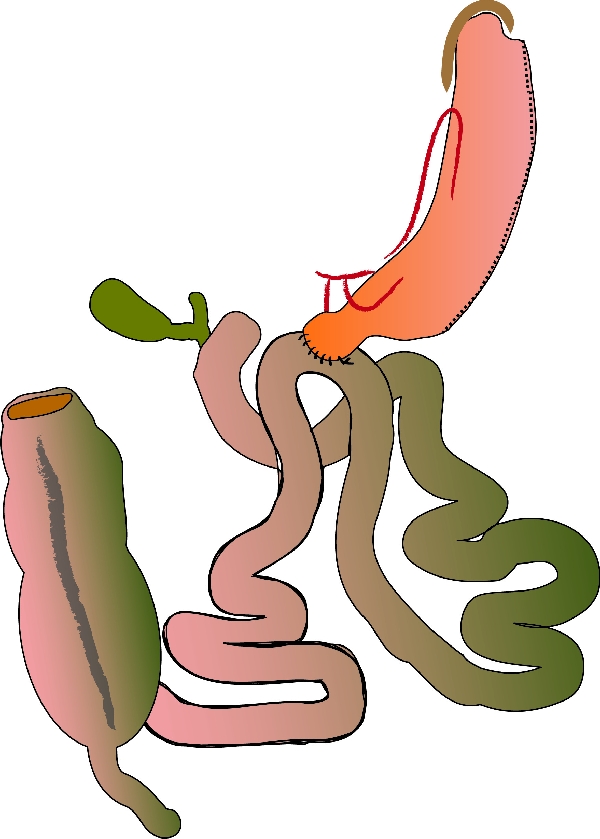|
Back to Annual Meeting Program
Weight Loss and Metabolic Profiles of Obese Patients After Single-Anastomosis Duodeno-Ileal Bypass With Sleeve Gastrectomy (SADI-S)
AndréS SáNchez-Pernaute*1, Miguel Angel Rubio-Herrera2, Pablo Talavera1, Elia PéRez-Aguirre1, Antonio J. Torres García1
1Surgery, Hospital Clínico San Carlos, Madrid, Spain, Madrid, Spain; 2Endocrinology, Hospital Clínico San Carlos, Madrid, Spain
Introduction. Single-anastomosis duodeno-ileal bypass with sleeve gastrectomy (SADI-S) is a simplified duodenal switch in which the duodeno-ileal diversion is performed in one loop at 200 to 250 cm from the ileo-cecal valve. Theoretical advantages of the technique are a shorter operative time, the reduction to only one anastomosis and the non-opening of the mesentery.
Aim. To analyze the weight evolution and the improvement of the metabolic profiles of obese patients submitted to SADI-S.
Patients and Methods. 102 patients have been submitted to SADI-S as a primary bariatric operation consecutively since May-2007 (Clinical Trials NCT01463904). There were 64 women and 38 men. Mean age was 48 years (22 - 71), mean weight 119 kg (72 - 164) and mean excess weight 53 kg (27 - 99). There were 65 type-2 diabetics, 41% of them on insulin therapy. Mean preoperative glycemia was 153 mg/dl and mean glycated hemoglobin 9.5%. There were 64 patients with dyslipemia and 57 patients had criteria of metabolic syndrome. The operation was performed laparoscopically in 96% of the cases. The sleeve gastric resection was always performed over a 54 French bougie; the duodeno-ileal anastomosis was performed at 200 cm from the cecum in the first 50 patients and at 250 cm in the next 52, to decrease the 6% rate of clinical hypoproteinemia. One self-limited anastomotic leak and 2 gastric leaks were registered. There were no postoperative deaths.
Results. Mean excess-weight loss was 78% at 6 months, 94% at 1 year, 100% at 2 years, 93% at 3 years and 108% at 4 years. Only one patient failed to achieve a 50% excess-weight loss. Mean glycemia fell to 94 mg/dl in the first year, 93 mg/dl in the second one, 91 mg/dl in the third and 95 mg/dl in the fourth postoperative year. Mean glycated hemoglobin values were respectively 5.3%, 5.2%, 5.4%, and 5.4%. 94% of diabetics with more than 1 year follow up were under no treatment; glycemia was under 100 mg/dl in 88% of them and glycated hemoglobin under 6% in 92% of them. The rate of dyslipemia fell from 64 to 20%. No vomits or alkaline reflux have been observed. Mean number of daily bowel movements is 2.5. Five patients suffered at least one episode of clinical hypoproteinemia, and 3 of them presented it recurrently. Two patients have been revised to a Roux-en-Y duodenal switch with a 3 meter alimentary limb and a 2 meter common channel. Now no patient has suffered any intestinal obstruction.
Conclusions. SADI-S is a simplified duodenal switch that offers a satisfactory weight loss and very good metabolic results. The preservation of the pylorus makes unnecessary the performance of a Roux-en-Y diversion. The technique reduces operative time and postoperative complications, in the short term by reducing the number of intestinal anastomosis and in the long term by decreasing the possibility of internal hernia.

Back to Annual Meeting Program
|


